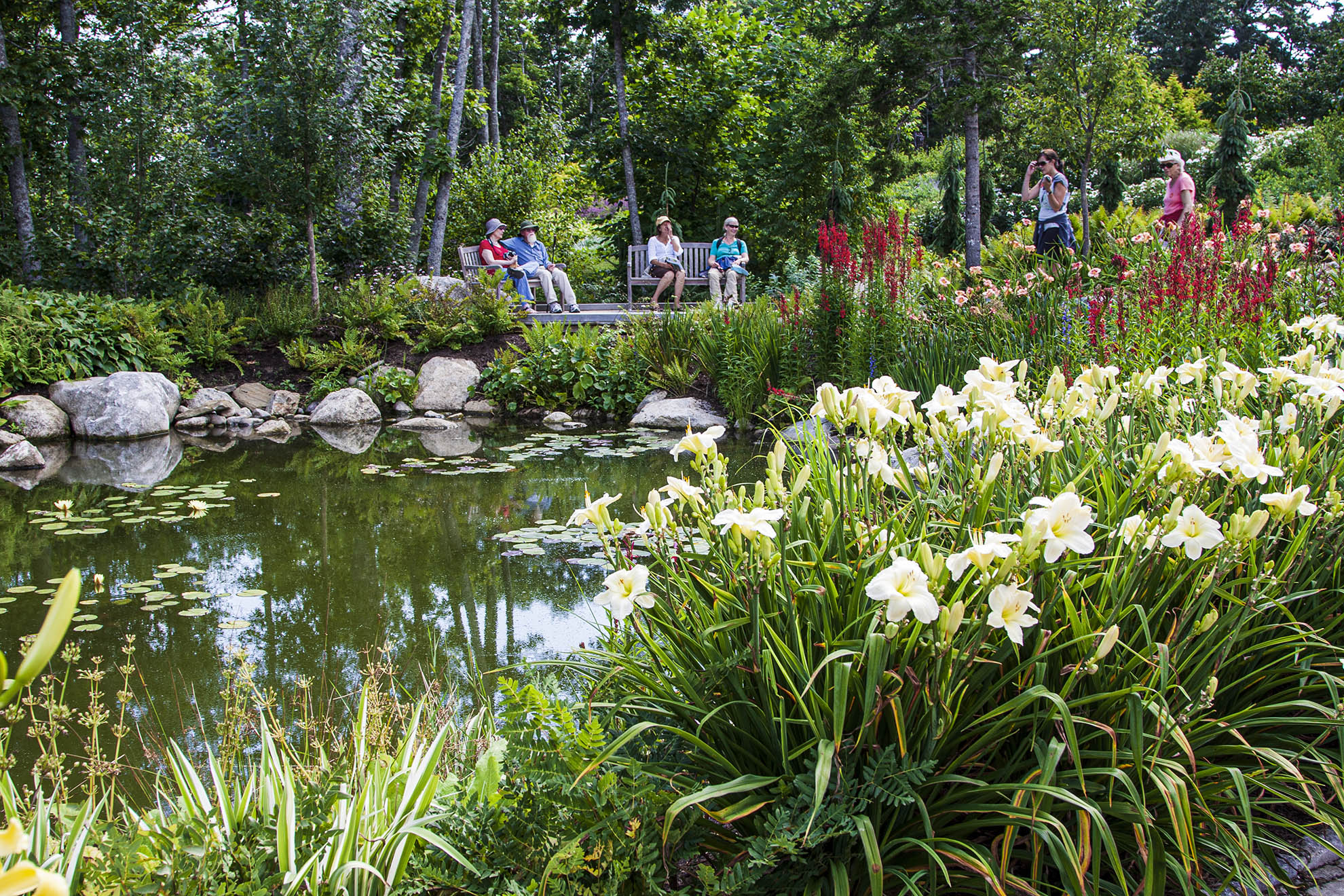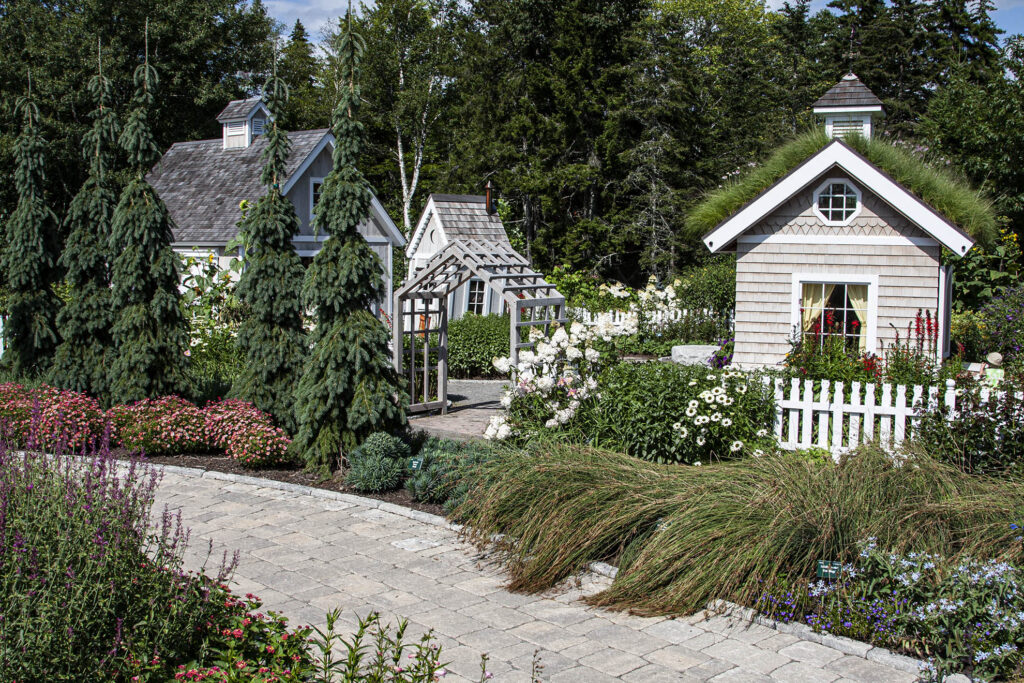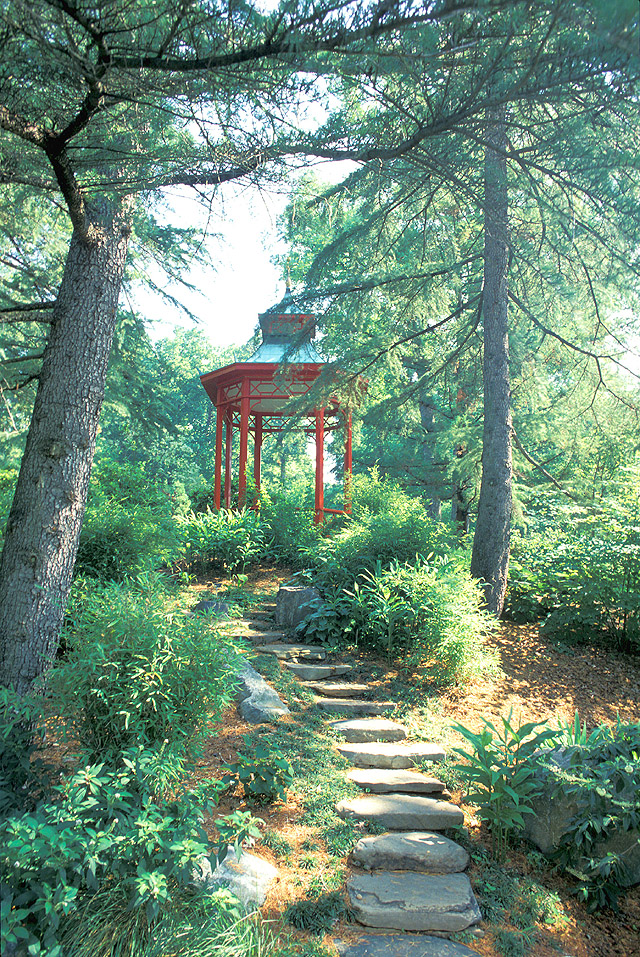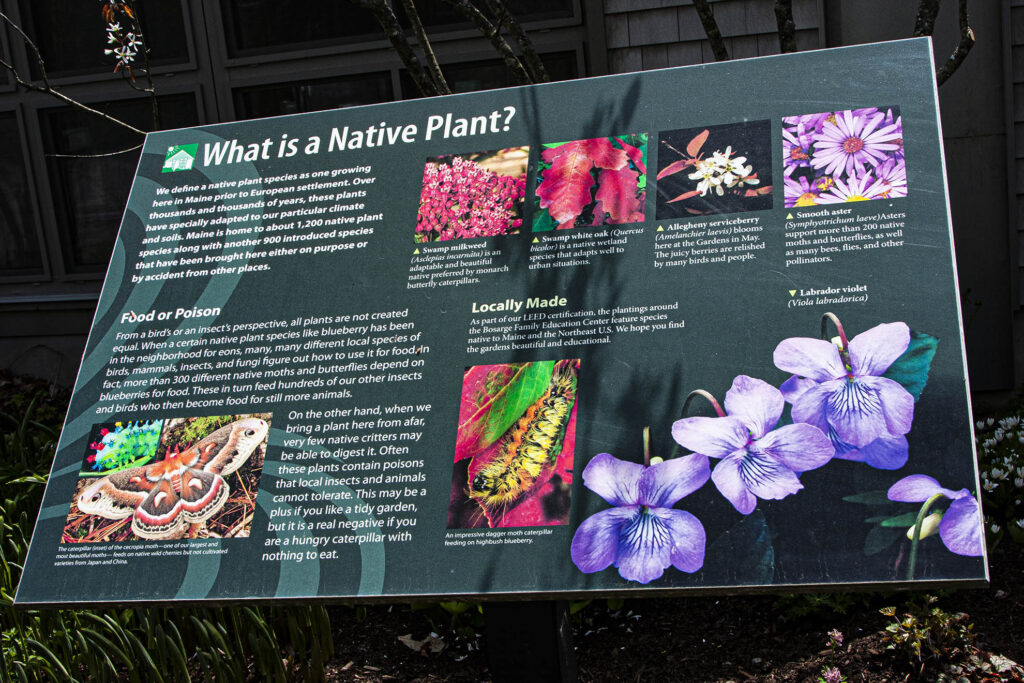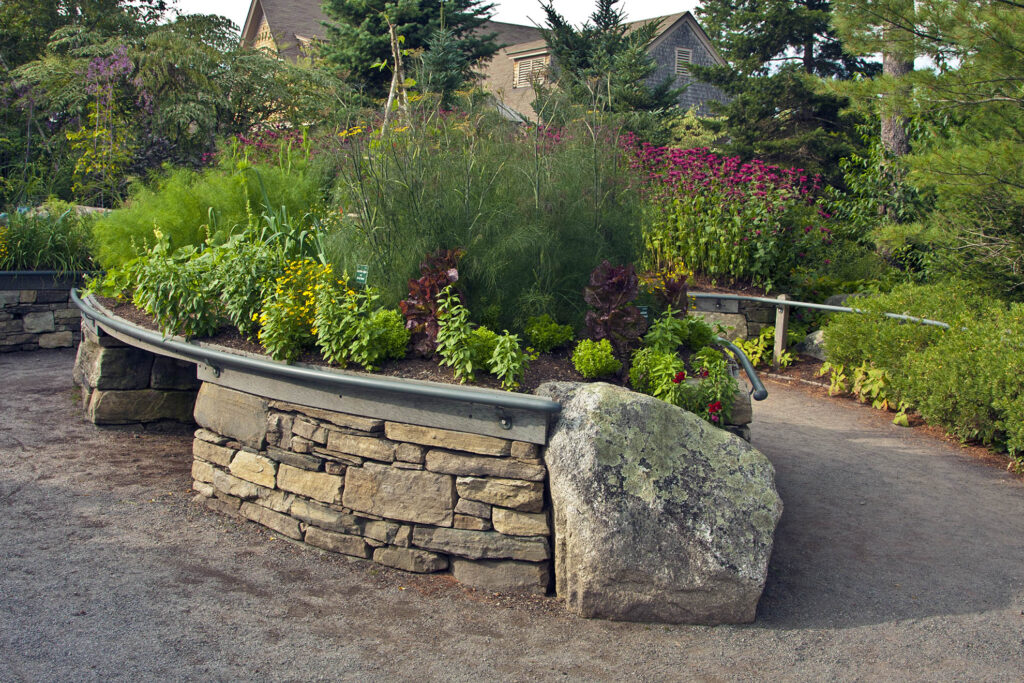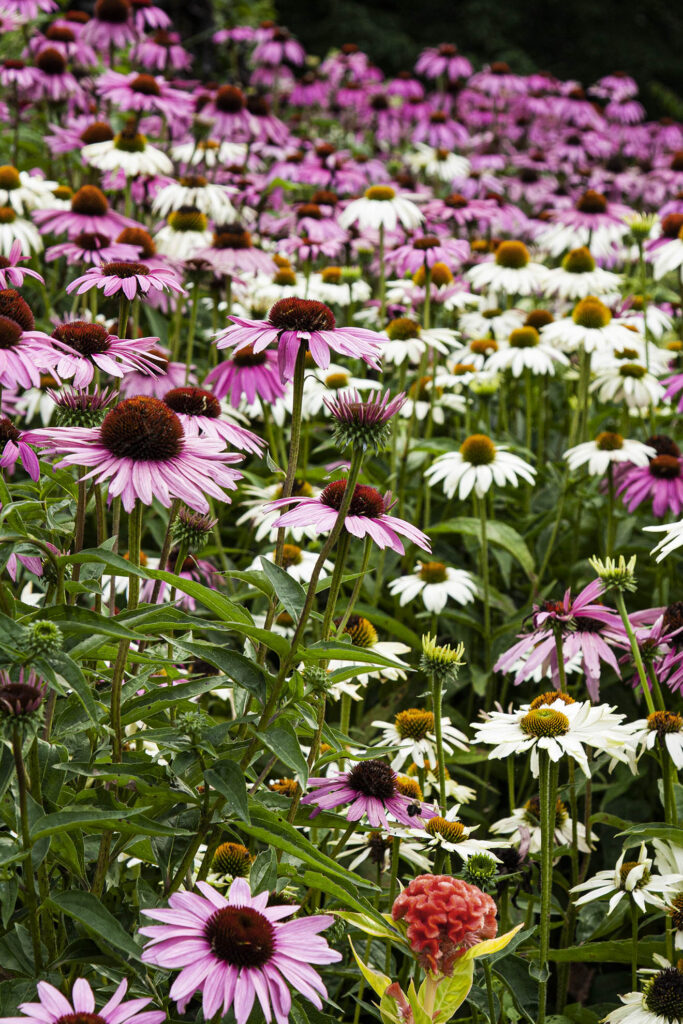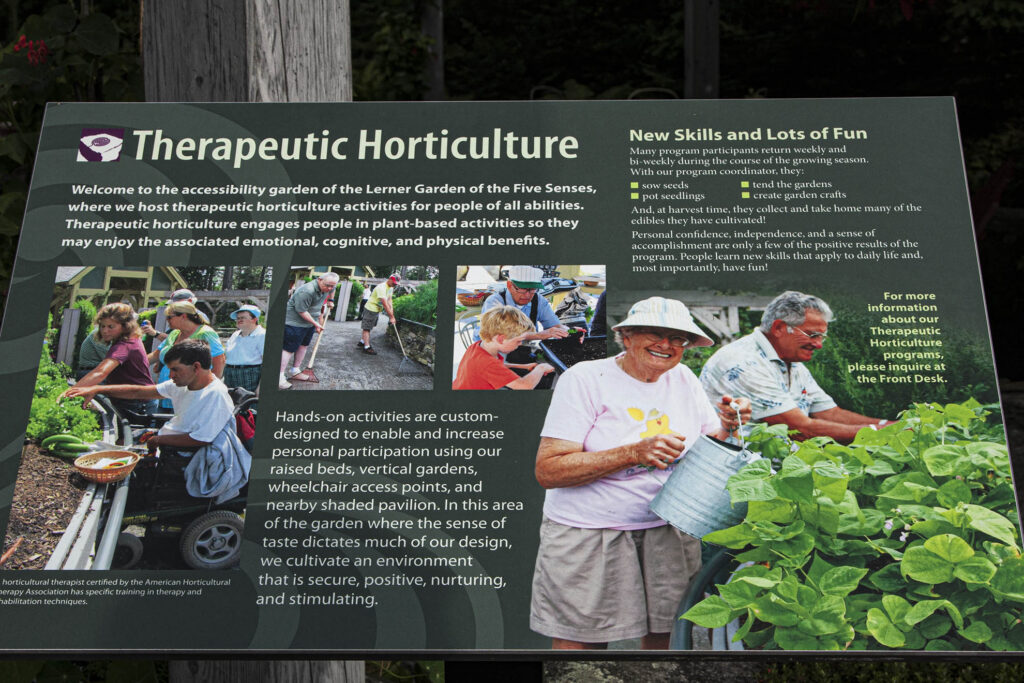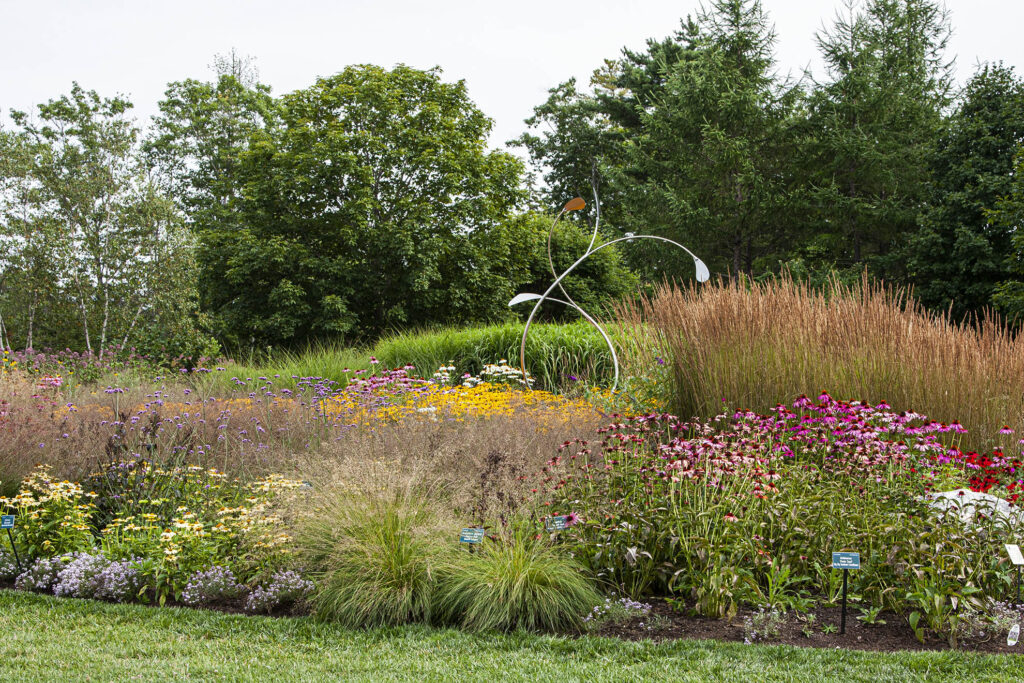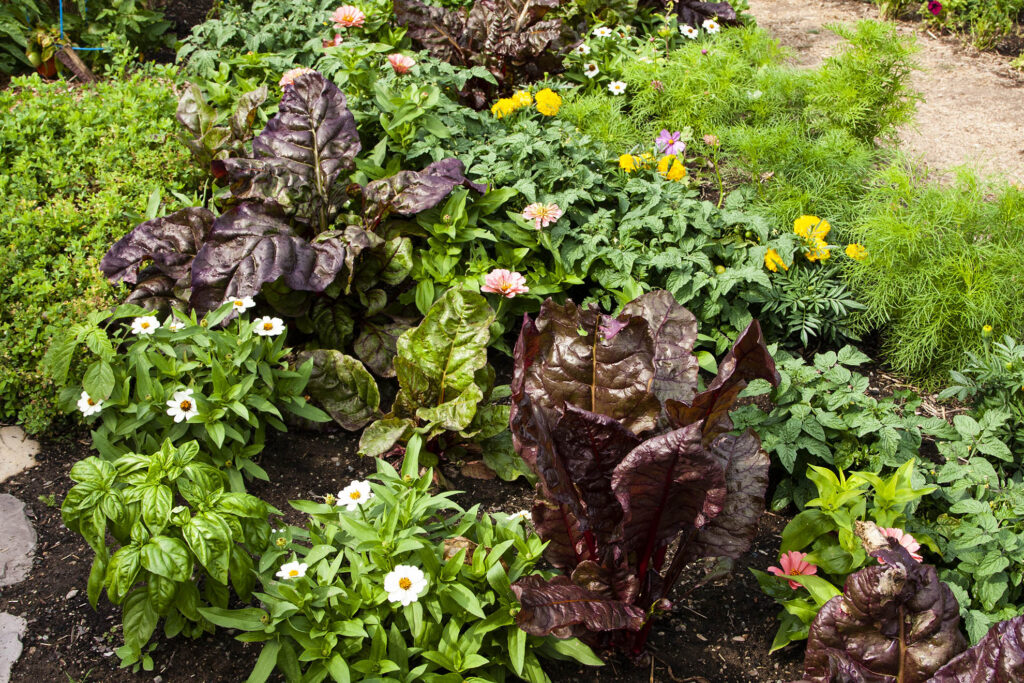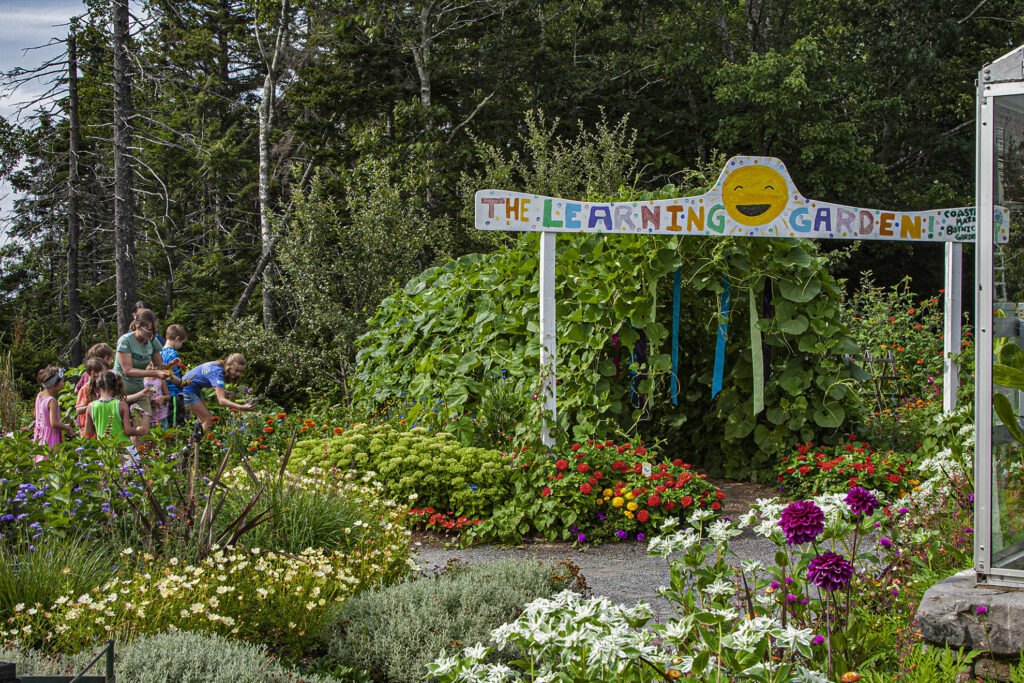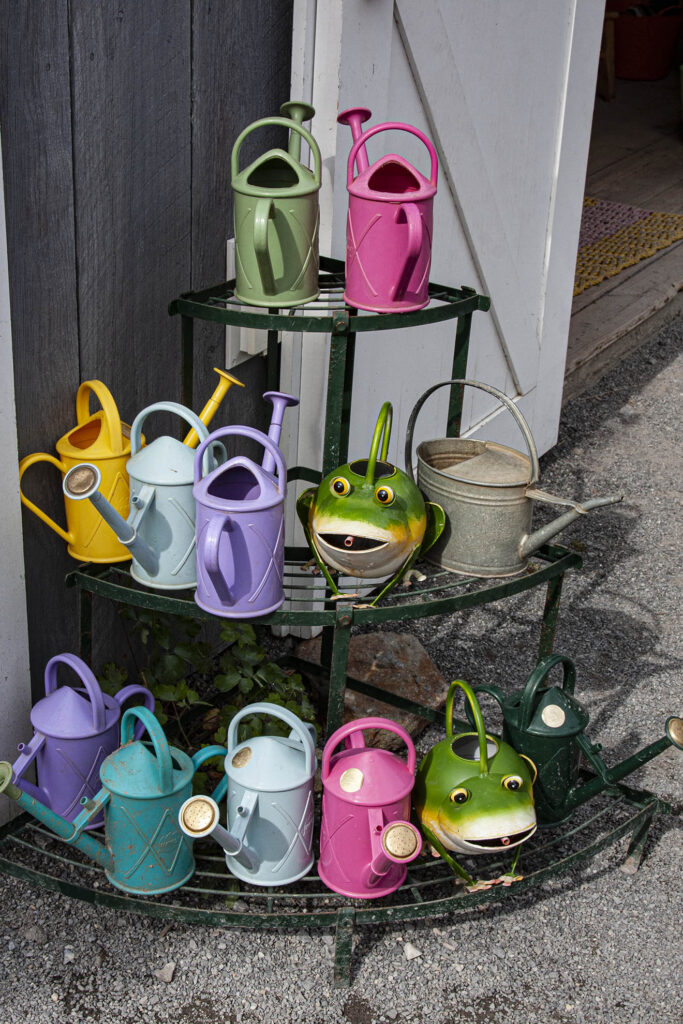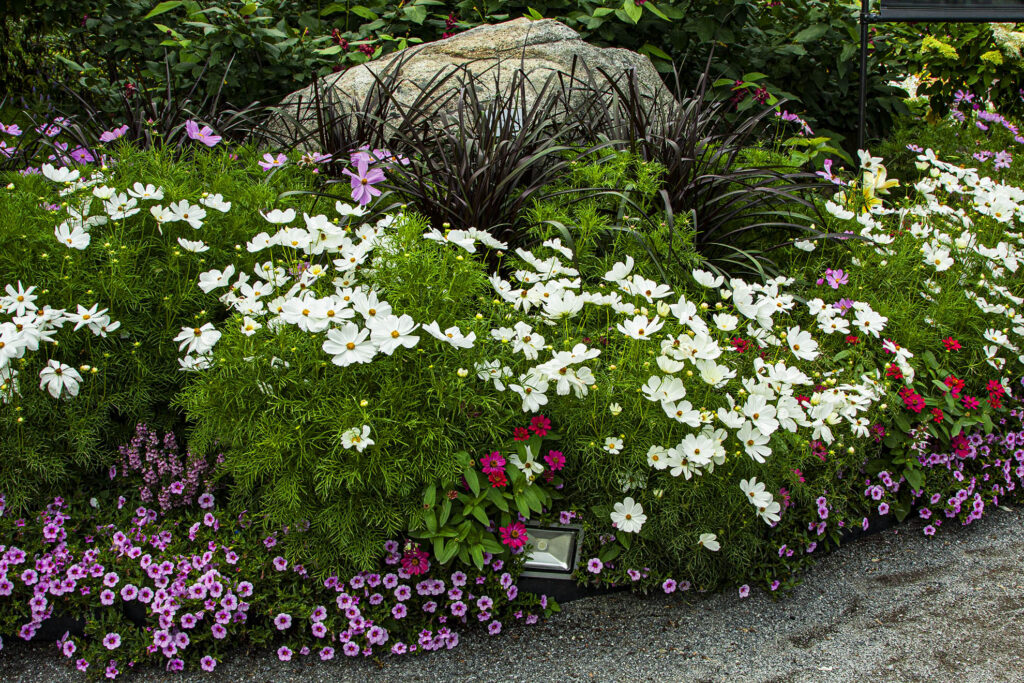A beautiful open-air gallery of art and design, the Coastal Maine Botanical Gardens attract visitors for many reasons. Its 295 acres of bright flower beds and quiet woodland trails are a colorful mix of flowers and art – from wind-activated sculptures and dramatic modern works of outdoor art to the to eye-pleasing color patterns of the flower beds.
For gardeners, it is a showcase filled with inspiration, especially for those who live in cooler climates and can see here new possibilities for their own gardens. As a botanical learning center, its classes, workshops and webinars for people of all ages cover subjects as wide-ranging as basic botany and drawing seeds under a microscope.
For children it’s a magical wonderland full of quirky plants, pretty flowers and new ways to interact with nature. For travelers, it’s one of Maine’s principal tourist attractions, a lovely place to visit between beaches, lighthouses and clambake cruises out of nearby Boothbay Harbor.
Flower beds, perennial borders, water features and themed gardens spread across a landscape that drops steeply to its 3600 feet of shore frontage on the tidal Back River in Boothbay, taking advantage of the terrain and the warming influence of its seacoast location.
Eight of the eleven gardens lie along the highest point with the manicured Great Lawn at their center. Prominent in the sloping lawn, beside the large Whale Rock, is George Sherwood’s Wind Orchid, a kinetic sculpture of stainless steel, one of 20 permanent art works that decorate the gardens. Bright perennial gardens surround the lawn, along with grasses, suggesting that the plantings are part of a natural meadow.
Above is the Rose Arbor and the Rose and Perennial Garden, at its height in June and July, but where the late bloomers flower into October. The arbor forms a bower of vines — wisteria, clematis, honeysuckle – and benches overlooking the gardens invite visitors to stay a while and smell the roses.
At the fringes of this central area, woodlands shelter some of the shade-loving gardens. One of these, the Slater Forest Pond, is in a natural low area, surrounded by native shrubs and filled with water lilies that bloom through the summer. Stepping stones allow visitors to get closer looks at the frogs and minnows that thrive in the water.
Below the lawn, the large Lerner Garden of the Five Senses is a whole series of gardens designed for visitors of all abilities. A large braille map marks the entrance, pointing the way to raised beds filled with fragrant and tactile plants withing east reach from a wheelchair. Velvety Lambs Ears, mint varieties, lavender and others appeal to the senses. Sounds of running water, birds and frogs fill the air, and George Sherwood’s stainless steel sculpture, Flock of Birds flutters overhead near a bridge.
The first place avid vegetable gardeners head to is the Burpee Kitchen Garden. Here vegetables, fruits, berries, herbs and ornamentals are interplanted in attractive arrangements that change each year. The produce – herbs, edible flowers, fruits and vegetables – is used to prepare dishes served in the adjoining Kitchen Garden Café (temporarily closed in 2021 but expected to re-open in 2022).
The kitchen garden also demonstrates how vegetables can be mixed attractively with flowers, using lush leafy greens such as Swiss Chard or red and green lettuces as borders. Herbs, too, provide multiple colors: sage and basil, for example have varieties in both purple and green and a variegated thyme has leaves of green and bright yellow. Even food gardeners find artistic inspiration here.
The largest area of the main gardens is devoted to the charming Bibby and Harold Alfond Children’s Garden. Children can’t resist patting the smooth contours of Whales, a pair of gray stone carvings by Carole Hanson, at the entrance, and art works throughout are inspired by children’s books written by Maine authors.
A favorite, recalling Robert McCloskey’s Blueberries for Sal, is the lifelike Sal’s Bear, a work in bronze by Nancy Schon, who is perhaps best known for her Make Way for Ducklings sculpture in the Boston Public Garden.
Winding paths lead through two acres of book-inspired gardens, woods and ponds. Each of the spaces has its own theme and focus: a story barn, a cottage with a grass roof, an arbor of leaves and flowers that forms a tunnel to walk through, a learning garden, a greenhouse, a maze lawn, a stack of colorful watering cans to fit small hands, and a chicken coop where children can join in to help at feeding time.
There is a giant tree house, a fanciful fairy house, a garden devoted to plants with giant-sized leaves that tower over small children. Throughout the garden are beds of bright flowers. Activities for children are everywhere, but the garden is just as full of delights and surprises for adults.
The entrance to the bosky Hanley Hillside Garden is behind the arbor, and its trails wind down past the Vayo Meditation Garden to the Shoreline Trail. This natural woodland is filled with wildflowers in the early spring, and sharp-eyed walkers will notice tiny fairy houses alongside the trail. These ephemeral miniature homes are constructed by children, entirely out of materials found in the forest – sticks, stones, moss, fallen leaves (no live plants allowed), lichens, bark, seed pods, and various cones.
No two visits will bring the same scenes, as the gardens change from season to season. Tulips, hyacinth and other colorful bulbs paint the scene in May, beginning even before the flowering trees are in bloom, and the woodlands hide delicate wildflowers. Summer brings a riot of colors and autumn sees the pathways lined with pumpkins. When winter freezes out the last of the blooms, the gardens spring to life in a riot of colored lights for the grand finale, Gardens Aglow.
The mission of Coastal Maine Botanical Gardens is “to inspire meaningful connections among people, plants, and nature through horticulture, education, and research.” They take the last two as seriously as they do the glorious gardens, with a full schedule of programs that include courses, workshops, professional classes and webinars. These cover a diverse range, from the fundamentals of botany and selecting native herbaceous plants to working with pollinators and solving “Pesky Garden Problems”.
Like everything else at the gardens, the programs extend to garden related art. Classes and workshops may explore plein air painting or making black and white infrared photographs. This year’s calendar includes a program for ages 10-18 with Danish artist Thomas Dambo, who is creating a series of five giant trolls to live in the woodlands. These are built from salvaged wood and recycled materials, and the artist will share his process in designing and building them.
Community outreach extends to programs in horticultural therapy, using plant-based activities to help improve physical, emotional, cognitive and social abilities for residents of assisted living and adult day-care facilities and others with special needs. Programs to engage young people in nature and wildlife include Budding Naturalist groups and a Young Birders Club.
Side Dish
There is no shortage of places to stay in this popular area of mid-coast Maine, but we especially enjoy the beautiful rooms overlooking the river at the Newcastle Inn, a hospitable B&B that is a member of Inns Along the Coast of Maine. Owner Julie is a goldmine of information about the area, suggesting enough walking trails to keep us busy for days and sharing her favorite clam shacks, lobster piers and restaurants.
Newcastle Inn is just across the river from the attractive coastal town of Damariscotta, known to seafood-lovers worldwide for Maine’s finest oysters. King Eider’s Pub is a lively place to savor these, only a few steps from the river where they grew.
By Barbara Radcliffe Rogers
Europe Correspondent, Planetware
Luxury Travel Editor, BellaOnline
Features, Global Traveler Magazine
https://worldbite.wordpress.com
Photos by Stillman Rogers

